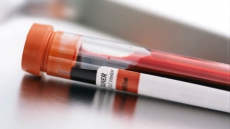India's leprosy elimination programme has not been "successful" and it will take at least 40 years to completely eliminate the disease from the country, an international expert has said.
In 2005, WHO had declared that India had eliminated leprosy. However, India reported an average increase of five to seven percent in the detection of new cases annually over the last five years, with an increased proportion of cases seen among children. According to the National Leprosy Eradication Programme (NLEP) of the union health ministry, 127,595 new cases of leprosy are detected in India every year.
Rene Staeheli, director, International Leprosy Eradication Programme (ILEP), also said human rights of those affected living in lepers colonies are violated as they are denied jobs and health facilities.
"India should realise that leprosy elimination as a public health programme has not been a success as the number of transmission has increased," Staeheli told IANS in an interview here.
"India has a high burden of leprosy patients in the interior areas of the economically backward states, where the medication for leprosy has not been extended yet. It may be due to various reasons," said the head of the global organisation that works to eradicate leprosy in the world. Its members are working in the field in leprosy endemic countries to obtain free Multi Drugs Therapy (MDT) supplies from WHO via the national programme.
"First of all, it is important to extend the medication for leprosy in those areas. Before that eradication of the disease is not possible. At least it will take another 40 years to eliminate the disease," Staeheli added.
According to the World Health Organisation, India accounts for 58 percent of the new leprosy cases in the world. Leprosy is an infectious disease that causes severe disfiguring of the skin and leads to nerve damage in the arms and legs. It is still endemic in a number of countries.
Staeheli, who was here to launch the GoodBye Leprosy Trust (GBLT), said that "if India intends to eradicate leprosy it needs to first develop a political will apart from providing proper financial resources and implement the working of coalition organisations. Confronting leprosy is not possible just by the efforts of the government."
The GBLT aims to generate public awareness and locally mobilise financial resources to eradicate leprosy.
"Studies and surveys have concluded that the number of new leprosy cases in the past decade have mostly emerged in the remotest corners of India where patients have been devoid of treatment," Staeheli told IANS.
He attributed the rise in the number of leprosy cases in the remotest part of India to the "non-availability" of the MDT treatment - the only way to cure leprosy at its initial stage.
"The situation is such that the lepers in the remote places of many states are not even aware of the MDT, which is provided free of cost by the WHO, the government and pharmaceutical organisations like Novartis," Staeheli added.
"As the incubation period (the time between contact with the bacteria and the appearance of symptoms) is usually five to seven years, it becomes difficult to give the MDT treatment (which is more effective during the initial phases) to people with leprosy," he said.
According to the NLEP, Uttar Pradesh has the highest number of new leprosy cases in 2013-14 (14,865), followed by Maharastra (12,659), Gujarat (5,981) and Chhattisgarh (5,656).
Delhi and the National Capital Region alone recorded 2,300 cases of leprosy last year.
Staeheli further said that the elimination programme cannot be successful in India until the existing cases are treated.
"Also, the motive should be to diagnose leprosy in its earlier stages," he asserted.
"The objective of every organisation working for the cause should be to avoid nerve damage. Without nerve damage, a patient can forget that he was ever affected with the condition. Nerve damage can be avoided if a patient is treated at an early stage, which has not been done in many interior parts of the country," he said.
Speaking about the discrimination the lepers face in colonies set up by the government, Staeheli said: "Currently India has 850 colonies, where people with leprosy are living marginalised from society. Serious human rights violations, lack of education rights and
employment opportunities and denial of health facilities are still seen."
All this, he said, is because of misconception and lack of correct knowledge about leprosy in society.
"Even the allocation of funds to civil society and NGO members, who voluntarily go to such areas to provide treatment, raise awareness and also curb the stigma, is scarce," he said.
He also called for "shunning" the stigma attached to the condition due to which people with leprosy hesitate to take an initiative to get treated.
Staeheli also said that India still enforces 16 laws that discriminate against people with leprosy.
"..almost all of the marriage and divorce laws in India consider leprosy as grounds for divorce, and other laws prohibiting the leprosy-affected from running for public office or inhabiting normal residential complexes (a major reason for the existence of leprosy colonies)" are some such laws, he added.





